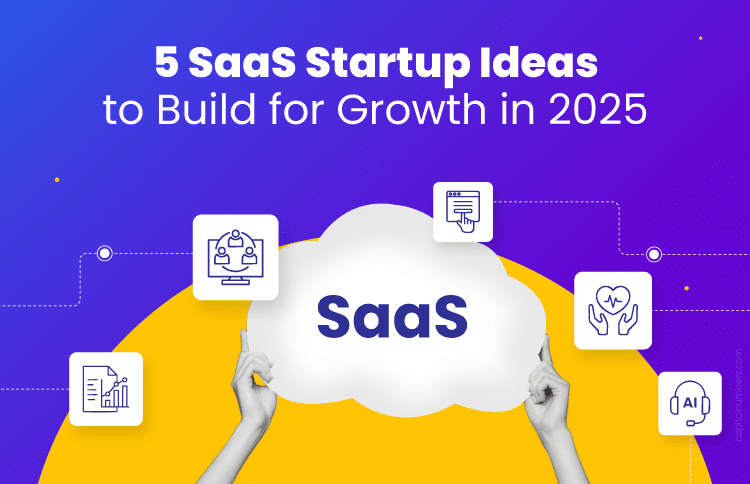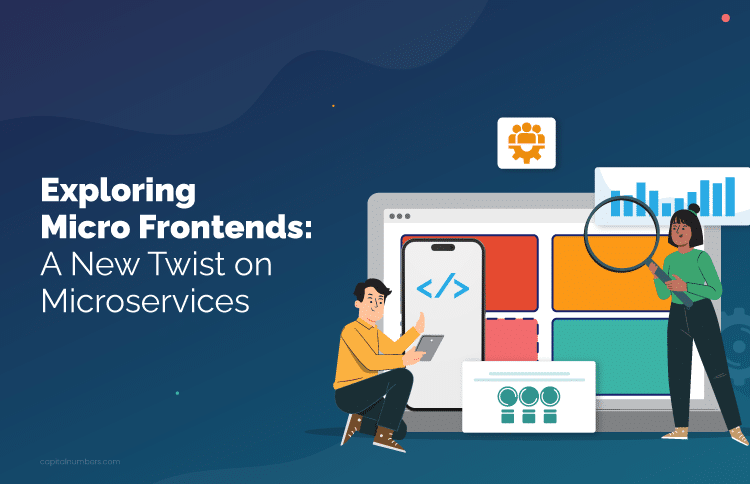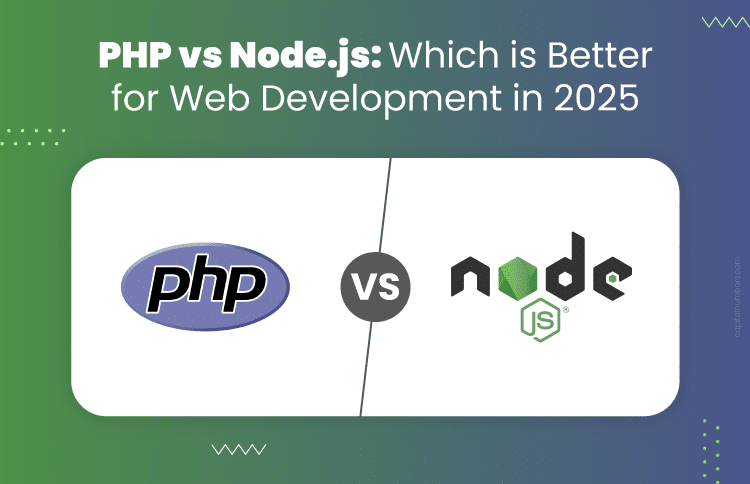5 SaaS Startup Ideas to Build for Growth in 2025
Table of Contents
SaaS (Software-as-a-Service) has become a game-changer in the business world. It’s all around us—helping companies simplify tasks, save time, and improve their services. From managing customer data to automating marketing, SaaS products offer flexibility, scalability, and cost-efficiency. For businesses of all sizes, these cloud-based solutions make work easier and more productive.
But with technology evolving so fast, staying ahead of trends is essential. To build SaaS products that stand out, businesses need to be innovative, always keeping an eye on what’s next. By tapping into emerging technologies and understanding market shifts, companies can create solutions that not only meet today’s needs but also anticipate tomorrow’s demands.
Looking ahead to 2025, there are a few SaaS ideas that show great potential for growth. These ideas align with industry trends, technological innovations, and market demands—creating excellent opportunities for new businesses. Explore these high-potential business ideas!
1. AI-Driven Financial Planning & Budgeting Tool for SMEs
Small and medium-sized enterprises (SMEs) play a crucial role in economies but often struggle with effective financial management due to limited resources and expertise. An AI-driven financial planning and budgeting tool tailored for SMEs can help business owners make smarter financial decisions, optimize budgets, and plan for future growth. This type of SaaS solution simplifies financial management with AI’s ease and accuracy, enabling SMEs to compete effectively with larger companies.
Why It’s a Good Idea
Financial planning and budgeting are essential for any business, but especially for SMEs that face tight margins and fluctuating market conditions. Traditional financial tools can be complex or costly, leaving SMEs with inadequate solutions. AI-powered tools address these challenges by automating tasks such as budget creation, expense tracking, and cash flow management. By providing real-time insights and personalized recommendations, AI helps businesses make proactive, data-driven decisions.
Potential Features
- Automated Budget Creation: AI generates budgets based on historical data, projected revenue, and expenses, reducing manual input and errors.
- Cash Flow Forecasting: Predictive analytics help businesses forecast cash flow, identify potential shortfalls, and plan accordingly.
- Expense Tracking & Optimization: Real-time expense tracking with AI-driven cost-saving suggestions.
- Financial Scenario Planning: AI models various scenarios to simulate the impact of revenue, expenses, or market changes.
- Tax & Compliance Support: Guidance on tax planning and staying compliant with regulations.
- Custom Reports & Insights: Generate clear, actionable financial reports tailored to the business.
Market Opportunity
As SMEs increasingly look for cost-effective, user-friendly financial tools, the demand for AI-driven solutions is growing. Many businesses still rely on basic spreadsheets or off-the-shelf accounting software that lacks advanced capabilities. Industries like retail, manufacturing, and professional services, with fluctuating revenues and tight cash flow, stand to benefit greatly from AI-powered financial tools. This presents a significant opportunity for SaaS providers to meet the growing need for advanced financial management solutions tailored to SMEs.
2. SaaS for Remote Team Collaboration
The rise of remote and hybrid work models has transformed the way teams collaborate. As more companies embrace flexible work arrangements, the need for digital tools to facilitate seamless communication and project management has skyrocketed. Remote work is here to stay, and businesses must adopt the right tools to ensure their teams stay connected and productive, no matter where they are located.
Why It’s a Good Idea
With teams now spread across different locations, the need for effective collaboration tools has never been greater. Whether it’s sharing documents, holding meetings, or managing tasks, businesses need reliable platforms to keep everything running smoothly. SaaS solutions designed for remote team collaboration can streamline communication, making it easier for teams to work together on projects, track progress, and meet deadlines.
Besides, remote work can sometimes lead to silos and miscommunication, which is why collaboration tools are essential for improving team communication, project management, and productivity.
Potential Features
- Real-Time Document Sharing and Editing: Teams can collaborate on documents, presentations, and spreadsheets in real time, eliminating version control issues.
- Video Conferencing and Team Chat: Virtual meetings and instant messaging help keep everyone connected and ensure that no one feels isolated.
- Task Management, Time Tracking, and Analytics: These features allow teams to manage their workloads, track deadlines, and analyze productivity to identify areas for improvement.
- Integration with Popular Tools: Integrating with existing tools like Google Workspace, Slack, or Trello allows teams to keep all their work in one place, making it easier to stay organized.
Market Opportunity
As more businesses shift to remote or hybrid work models permanently, the demand for remote collaboration tools is growing. Industries like tech, marketing, and consulting are particularly focused on finding solutions that will support their distributed teams. While tools like Zoom and Slack are already popular, there is still room for improvement and innovation in this space, especially for tools that offer a more integrated, all-in-one experience. By targeting businesses that are adjusting to this new normal, SaaS solutions can tap into a thriving market of companies looking for reliable, efficient ways to manage their remote teams.
3. Subscription Management and Billing Platforms
The subscription economy is booming. From SaaS companies and streaming services to e-commerce platforms offering subscription boxes, businesses across all industries are adopting subscription-based models. This shift offers predictable revenue streams and long-term customer relationships, making it a win-win for both companies and consumers. However, as the subscription model grows, so does the need for robust systems to handle the complexities of billing, payments, renewals, and pricing.
Why It’s a Good Idea
As more businesses move to subscription models, there’s a growing demand for efficient subscription management and billing systems. These tools are crucial for automating routine tasks like invoicing and renewals, ensuring that businesses can focus on growth without getting bogged down in administrative work. Subscription models often come with complex pricing structures, varying tiers, and trial periods, making it difficult to manage manually. Billing systems that can handle these complexities—along with refunds, upgrades, and downgrades—are essential for keeping operations smooth and customers happy.
Potential Features
- Automated Invoicing and Billing Cycles: Automating billing cycles ensures customers are charged on time and prevents errors that can lead to missed payments or overbilling.
- Support for Different Payment Methods: Subscription platforms must support a variety of payment methods, such as credit cards, digital wallets, and ACH transfers, to accommodate global audiences.
- Subscription Tier Management and Pricing Flexibility: These features allow businesses to manage multiple pricing tiers, offering flexible plans based on usage, features, or customer needs.
- Analytics for Customer Lifetime Value and Churn Prediction: Advanced analytics tools can track metrics like customer lifetime value (CLV) and churn rates, helping businesses optimize pricing strategies and customer retention efforts.
Market Opportunity
Subscription management platforms cater to a wide variety of industries, including SaaS providers, media companies (like streaming services), e-commerce platforms, and membership-based organizations. These industries are growing rapidly, with more companies adopting subscription models to provide ongoing value to their customers. Despite the popularity of subscription services, there is still a significant need for more integrated, user-friendly tools that address pain points around billing, accounting, and revenue forecasting. Developing a platform that streamlines these processes is a key opportunity for businesses looking to tap into this booming market.
4. AI-Powered Customer Support Platforms
As businesses expand, the need for fast, reliable customer support grows. Customers expect quick responses to their queries, no matter the time of day. This has led many companies to explore automation solutions, allowing them to handle customer requests efficiently while reducing the burden on human agents. AI-powered customer support platforms are becoming a crucial part of this transformation, helping businesses meet customer demands without compromising on quality.
Why It’s a Good Idea
The growing demand for 24/7 customer service is one of the key drivers behind the rise of AI in support platforms. Customers want quick answers, and they want them now. AI tools, like chatbots and virtual assistants, can handle a wide range of queries at any hour, ensuring no customer is left waiting.
Additionally, AI and machine learning are enhancing customer support by automating responses and offering more personalized experiences. AI can learn from past interactions, improving its responses over time and predicting customer needs.
Potential Features
- Chatbots and Virtual Assistants: These can handle simple inquiries, freeing up human agents for more complex tasks.
- Sentiment Analysis and Automated Responses: AI can analyze customer emotions and tailor responses accordingly, improving satisfaction.
- Integration with CRM Systems: By connecting with existing customer data, AI can offer personalized responses and track interactions.
- Voice Recognition and Predictive Analytics: Voice-enabled AI can handle calls, while predictive analytics can suggest solutions based on customer history.
Market Opportunity
AI-powered support platforms are already making a difference in various industries, including e-commerce, finance, and healthcare. In e-commerce, for example, AI can help manage large volumes of customer queries about products or orders. In healthcare, AI can assist in answering patient queries or appointment scheduling. As AI adoption grows across industries, the demand for these platforms will continue to rise.
You May Also Read: AI in 2025: Reshaping Healthcare, Finance, and Retail
5. Personalized Health & Wellness Coaching Platform
With growing awareness of mental and physical well-being, personalized health and wellness have become a priority for many. The health and fitness industry is shifting toward solutions that cater to individual needs. A personalized health and wellness coaching platform offers an excellent opportunity in this expanding market. By providing tailored coaching experiences, businesses can help users achieve their health goals more effectively, whether through fitness routines, nutrition plans, or mindfulness practices.
Why It’s a Good Idea
As people prioritize their health, they increasingly seek personalized guidance to meet their specific goals. A one-size-fits-all approach doesn’t work in wellness, which is why customized coaching is essential. Whether for fitness enthusiasts, individuals with specific health concerns, or busy professionals, offering personalized plans helps users stay motivated and achieve real results.
With health and wellness becoming more data-driven, integrating wearables and health-tracking apps into the platform can provide valuable insights. These tools offer personalized advice based on individual health data, ensuring users get the most out of their wellness journey.
Potential Features
- Customized Fitness Plans: Tailored workout plans based on goals, fitness levels, and preferences, with adjustments over time.
- Nutrition Guidance: Personalized meal plans, dietary advice, and recipes that align with health goals and dietary restrictions.
- Mindfulness & Mental Health Tools: Guided meditation, stress management exercises, and sleep improvement tips to nurture mental well-being.
- Integration with Wearables: Sync with devices like Fitbit and Apple Watch for real-time health data to personalize recommendations.
- Progress Tracking & Feedback: Track progress across fitness, nutrition, and wellness, with AI-powered adjustments based on performance.
- Live Coaching & Virtual Consultations: One-on-one virtual sessions with fitness trainers, nutritionists, or wellness experts.
Market Opportunity
The health and wellness market is booming, with more people focused on improving their well-being. Industries like fitness, nutrition, and mental health are thriving, with increasing demand for personalized solutions. There’s still room for growth, especially in integrating multiple health aspects into a seamless platform. Targeting niche markets—such as busy professionals or people with specific health conditions—can help SaaS providers capture a broad audience while offering a holistic approach to wellness.
Have a SaaS idea but need the right team to build it? At Capital Numbers, we specialize in scalable, secure, and high-performance SaaS development—turning your vision into a powerful software solution.
Let’s make it happen! Get in touch today.
Additional Considerations for Building a Successful SaaS Business
While the ideas and features for your SaaS product are essential, there are other critical steps and factors to consider before and during development. These considerations will help ensure that your SaaS business not only launches successfully but also grows and scales in a sustainable way.
How to Validate Your SaaS Idea
Before diving into full-scale development, it’s crucial to test the waters and validate your SaaS idea. This step helps you determine whether there’s a real market for your product and if your target customers are ready to pay for it.
- Customer Discovery: Start by talking to potential customers. Conduct interviews or surveys to understand their pain points and needs. By gathering qualitative data, you can assess if your product addresses a real problem.
- Minimum Viable Product (MVP): Once you’ve gathered initial insights, create an MVP— a simplified version of your SaaS product that includes only the core features. This allows you to test the basic functionality and gather feedback before building a full product.
- Pilot Program: Offer your MVP to a select group of users at a discounted rate or for free in exchange for detailed feedback. This helps you assess whether your product meets customer expectations and whether they find enough value to continue using it.
- Customer Demand: Track the demand for your MVP through metrics like sign-ups, retention rates, and customer engagement. If people are signing up but not using the product regularly, it may indicate a misalignment with their needs, allowing you to pivot before full-scale development.
Validating your idea early on helps you avoid investing resources into a product that might not be viable in the market.
Key Metrics for Tracking SaaS Growth
To ensure your SaaS business is on the path to success, it’s essential to track key performance indicators (KPIs) that reflect both your financial health and customer satisfaction. These metrics provide valuable insights that guide decision-making and growth strategies.
- Customer Acquisition Cost (CAC): This measures how much you spend on marketing and sales to acquire a new customer. Keeping CAC low while increasing customer value is critical for profitability.
- Monthly Recurring Revenue (MRR): MRR reflects the predictable revenue your business generates each month from subscriptions. It’s one of the most important metrics for SaaS businesses, providing insight into growth and stability.
- Churn Rate: The churn rate shows how many customers cancel their subscriptions within a given period. A high churn rate can indicate dissatisfaction or unmet needs, signaling the need for improvements in customer retention efforts.
- Customer Lifetime Value (CLV): CLV calculates the total revenue a business can expect from a customer over the duration of their relationship. A higher CLV, compared to CAC, shows the effectiveness of your business model and customer retention strategies.
- Net Revenue Retention (NRR): NRR measures the revenue retained from existing customers, accounting for upgrades, downgrades, and churn. A high NRR indicates strong customer loyalty and growth potential.
By regularly tracking these metrics, you can make informed decisions that help optimize your SaaS product and marketing strategies to scale your business.
You May Also Read: Balancing Cost & Quality in Software Development Outsourcing
Conclusion
Building a successful SaaS business requires more than just a great idea. You need to validate your product-market fit early, track key metrics to guide your growth, and choose a tech stack that will support your goals long-term. By following these considerations, you’ll be better equipped to build a SaaS product that not only meets the needs of your customers but also thrives in a competitive market.
In addition to these foundational steps, leveraging innovation and emerging trends is crucial for staying ahead of the curve. Whether it’s incorporating AI, machine learning, or enhancing your platform with new integrations, embracing the latest technologies will help you deliver cutting-edge solutions that drive customer satisfaction and business growth. By continuously innovating and adapting to market changes, you can ensure that your SaaS product remains relevant, scalable, and positioned for long-term success.














